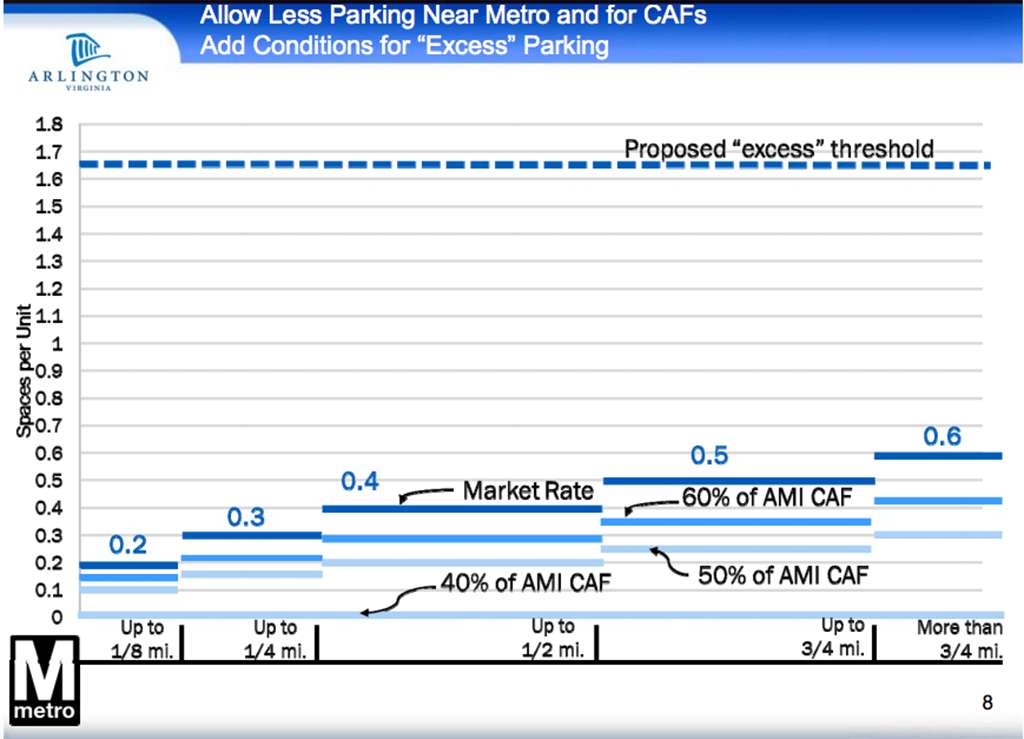The Arlington County Board unanimously approved a plan to allow new apartment and condo buildings near Metro stations to potentially provide less off-street parking.
Developers can now substitute car parking spaces at certain new apartment and condo buildings built in the Rosslyn-Ballston and Crystal City-Pentagon City Metro corridors for bike and car-sharing. Any tweaks will still be subject to Board approval on a case-by-case basis, and do not affect parking at existing buildings.
It also standardizes a practice that county staff said has evolved in recent years, of approving projects with less parking. Any reduction will only be supported if staff believe local transportation infrastructure can handle the extra demand on transit and parking, or if a project invests in new transportation options.
“These guidelines reflect the fact that the increase in transportation options in our Metro corridors means that some new developments will require less parking,” Board chair Jay Fisette said in a statement. “The guidelines will only apply in the Metro corridors, and only to new projects approved by special exception. They will have no impact at all on existing buildings. And it remains up to the Board, to approve the final parking ratio for each proposed project, based on the site-specific circumstances and the project’s characteristics.”
The new policy includes the following, per a county press release:
- Minimum parking requirements for market-rate units ranging from 0.2 to 0.6 spaces per unit depending on distance from the nearest Metro station entrance (ranging from 1/8 to 3/4 of a mile).
- Minimum parking requirements for 60-percent-of-Area-Median-Income and 50-percent-of-AMI committed affordable units, and no minimum parking requirements for 40-percent-of-AMI units.
- Reductions of up to 50 percent of the minimum parking requirements in exchange for providing bike parking, bike share, or car-share amenities on site, in addition to those already required by the county.
- A separate visitor parking requirement of 0.05 spaces per unit for the first 200 units.
- Allowances for shared parking between different land uses in mixed-use projects, like offices, retail and residential.
- Allowances for meeting parking requirements through the dedication of spaces at existing garages located within 800 feet of the new building and in the Metro corridors.
- Mitigation requirements for parking in excess of 1.65 spaces per unit.
- Relief from minimum parking requirements for sites with physical constraints like size, historic structures that must be retained and more.
The change, to encourage more use of transit, bicycles and other transportation, stemmed in part from a report released earlier this year by the county’s residential parking work group.



